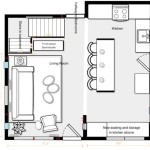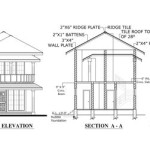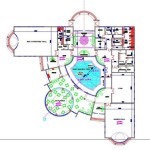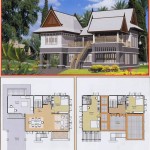Archival House Plans: Unlocking the Secrets of Architectural History
Archival house plans are captivating blueprints that preserve the essence of bygone eras. They offer invaluable insights into architectural styles, construction techniques, and the living spaces of our ancestors. Whether you're a history buff, a homeowner seeking inspiration, or an architect searching for historical precedents, understanding archival house plans is essential.
Types of Archival House Plans
There are two main types of archival house plans:
- Original Plans: Created by architects during the original construction of the house.
- Measured Drawings: Created by architects or historians after the house has been built, accurately documenting its existing condition.
Both types provide valuable information, although original plans tend to be more detailed and accurate.
Reading Archival House Plans
Understanding archival house plans requires some basic knowledge of architectural symbols and conventions. Here are a few key tips:
- Scale: Plans are typically drawn to scale, enabling you to accurately measure dimensions.
- Symbols: Doors, windows, furniture, and other elements are typically represented by symbols.
- Floor Plans: Show the layout of the rooms on each floor.
- Sections: Cut-away views that reveal the heights and construction details of the building.
- Elevations: Drawings that show the front, back, and sides of the house.
Benefits of Using Archival House Plans
Archival house plans offer numerous benefits, including:
- Historical Accuracy: Provide a true-to-life representation of the original design.
- Architectural Inspiration: Can provide valuable ideas for home design and remodeling.
- Construction Guidance: Can be used as a guide for accurately restoring or replicating a historical building.
- Educational Value: Offer insights into architectural history and the evolution of building practices.
Accessing and Preserving Archival House Plans
Archival house plans are typically available at local historical societies, archives, and university libraries. It's important to handle these fragile documents with care and follow conservation guidelines to ensure their preservation for future generations.
Conclusion
Archival house plans are invaluable resources for understanding historical architecture and inspiring contemporary design. By carefully reading and interpreting these blueprints, we can unlock the secrets of our architectural heritage and forge a deeper connection with the built environment.

Caubriand European House Plan Luxury

Di Medici Place Castle House Plan Luxury

Fountainbleau Open Floor Plan Mansion House

Balm Castle House Plans Luxury Home

Dysart Castle House Plan Mansion

Dalmany House Plan Estate Archival Designs Inc

Cranberry Gardens House Plan Archival Designs

Vinius House Plan Archival Designs Inc

M Small Luxury House Plan Open Home Floor Plans

La Vogue Luxury Floor Plans Open Home Plan








